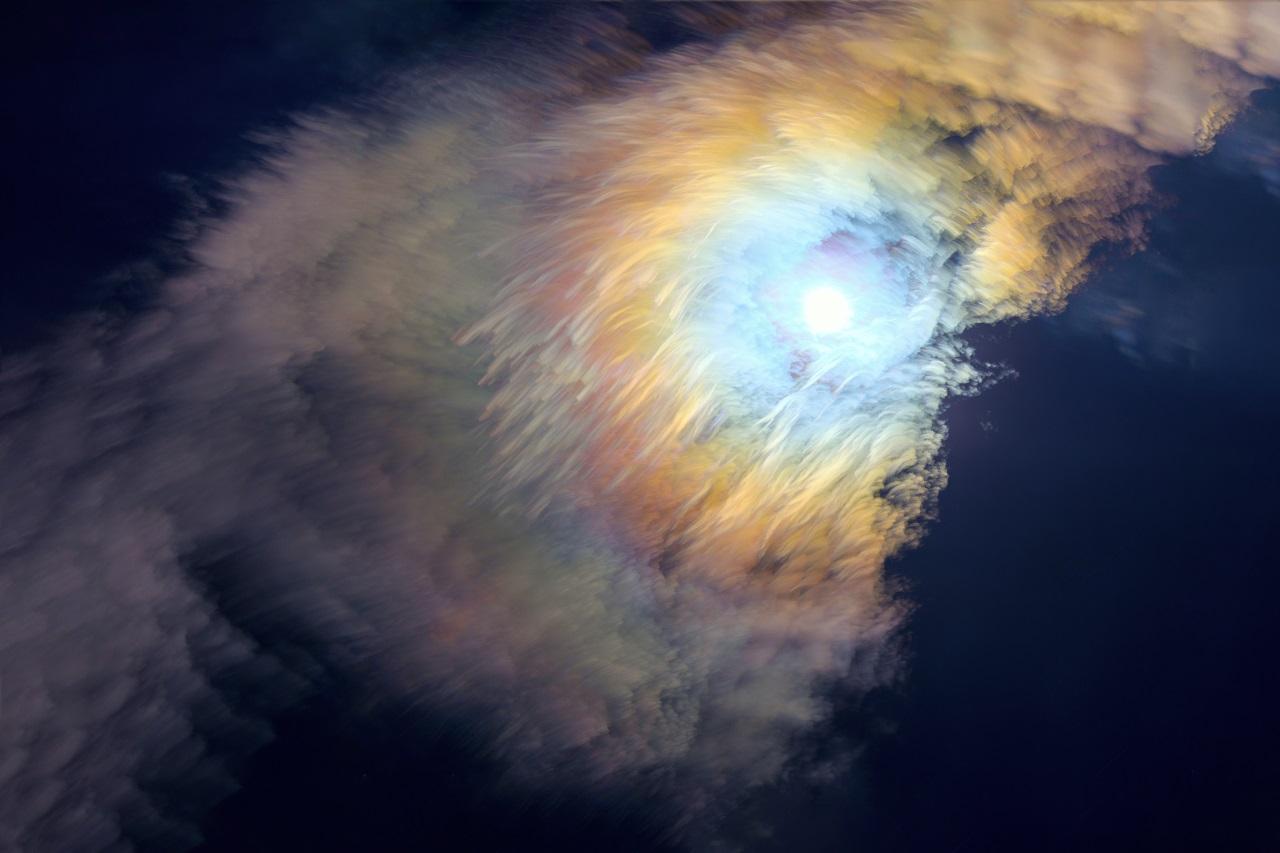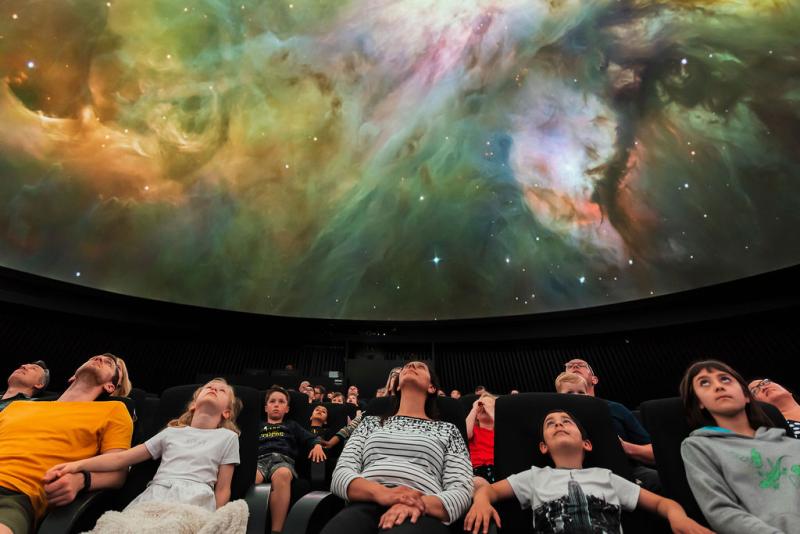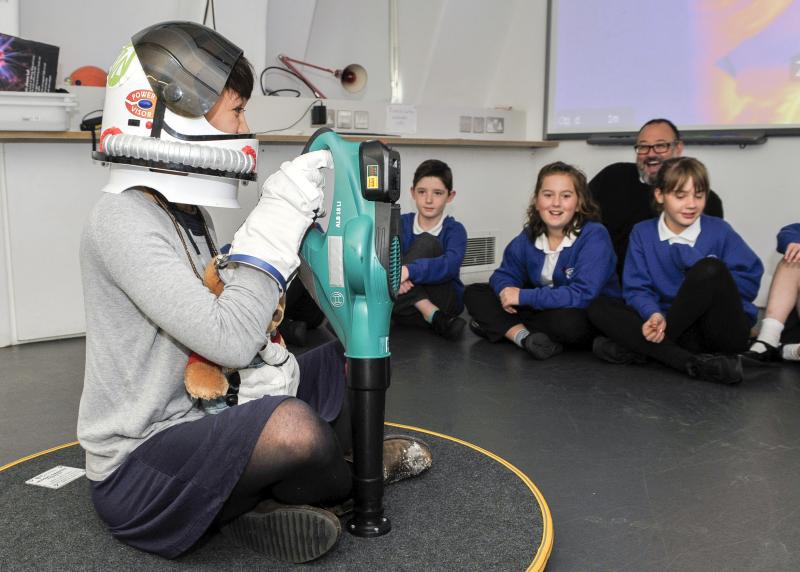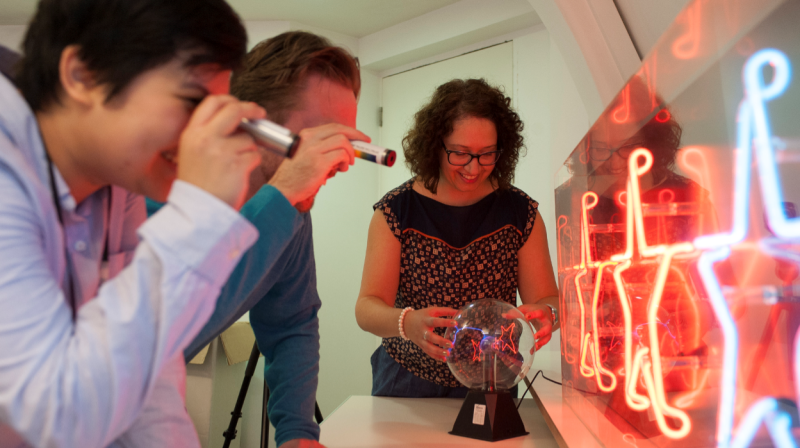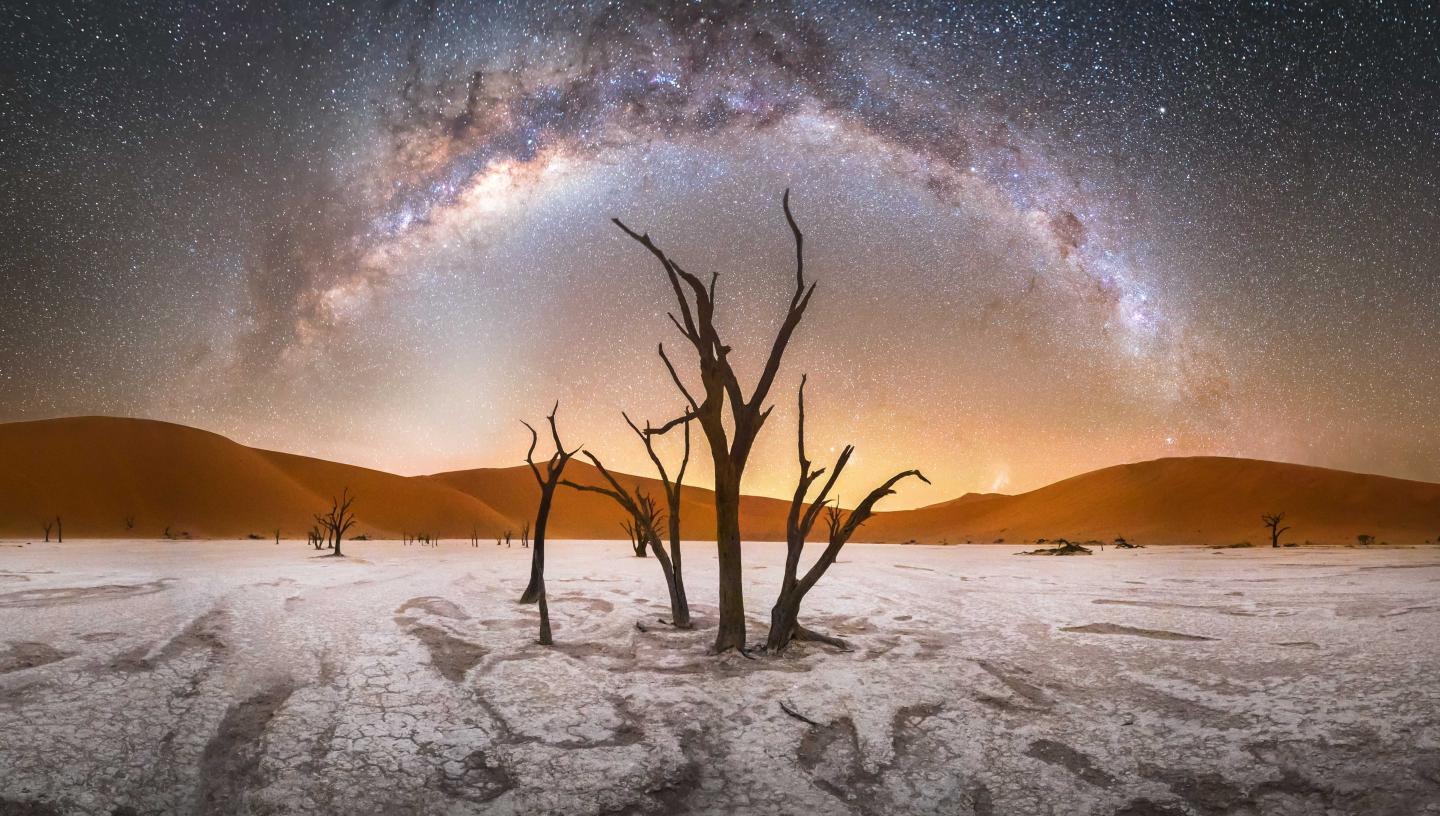
Discover what to see in the night sky in August 2021, including a blue moon and the Perseids meteor shower.
Top 3 things to see in the night sky in August
- Throughout the month – Spot the Summer Triangle
- 11 to 13 August – Keep an eye open – it’s the peak of the Perseids meteor shower
- 22 August – It’s a blue moon
(Details given are for London and may vary for other parts of the UK)
Look Up! Podcast
Subscribe and listen to the Royal Observatory Greenwich's podcast Look Up! As well as taking you through what to see in the night sky each month, Royal Observatory Greenwich astronomers pick a topic to talk about.
For August, they're talking about the first measurements of isotopes in an exoplanet's atmosphere, and they're discussing the recent Hubble Space Telescope glitch that saw it go into safe mode for a month.
Have a listen below, then vote for your favourite story from this episode on our Twitter poll (@ROGAstronomers) during the first week of August
Our podcast is available on iTunes and SoundCloud
Astronomy in August 2021: key events and what to see
Throughout the month: the Summer Triangle
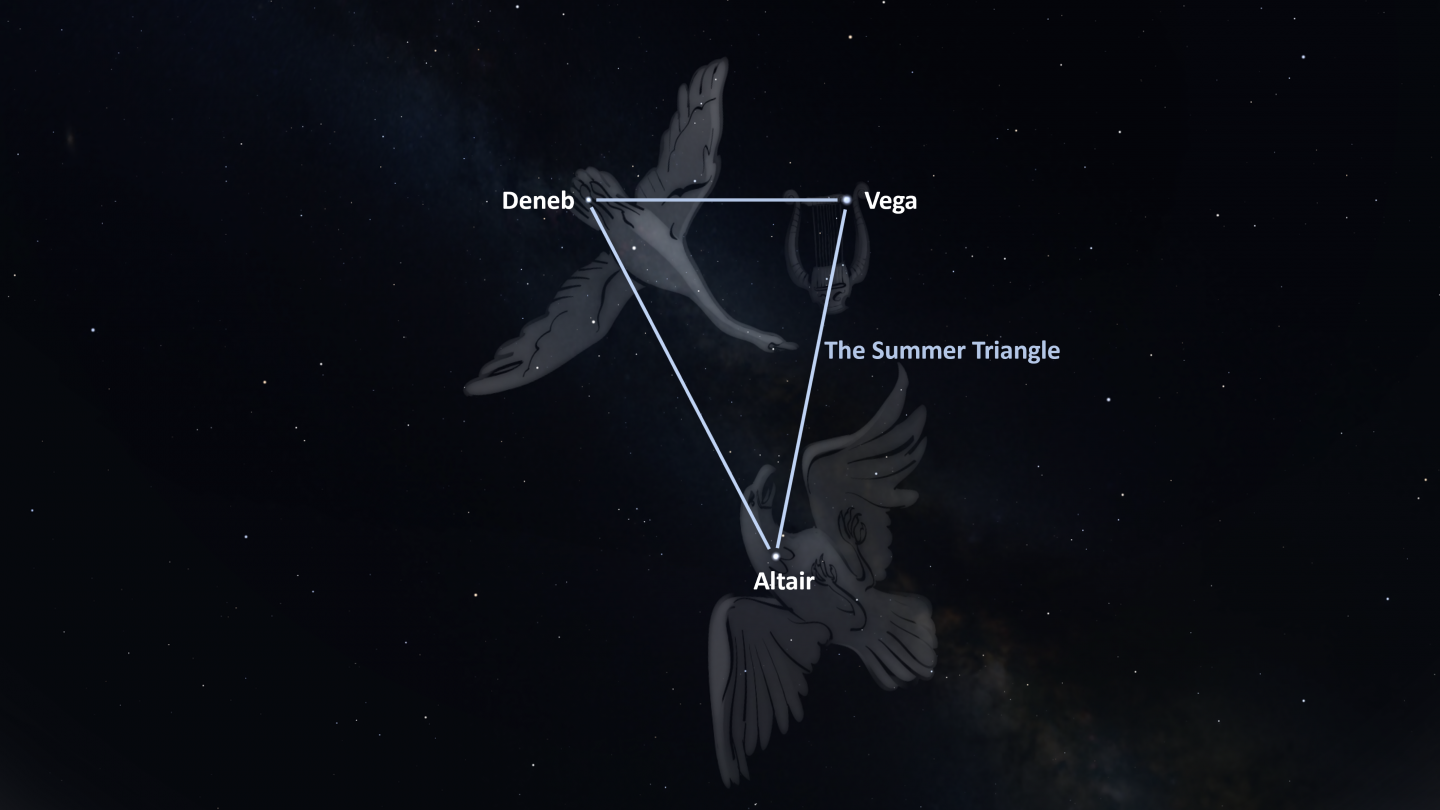
The summer brings with it the Summer Triangle, an asterism made up of the stars Vega, Deneb and Altair. These are the brightest stars of the constellations Lyra, Cygnus and Aquila respectively. Vega is the brightest star in the Summer Triangle and it is younger than our solar system and around twice the size of our Sun. Like the Sun, Vega is predominantly composed of hydrogen and is a main sequence star. This means that it is fusing hydrogen at its core to form helium, releasing enormous amounts of energy.
Vega is one of the brightest stars in the sky, and is very near to our current North Star, Polaris. The North Star actually changes over the course of millennia thanks to the Earth’s precession, with this wobble altering where in the sky the Earth’s axis of rotation is pointing towards. Several thousand years ago, Vega was the North Star, and will be again in around 12,000 years’ time.
Throughout the month: the gas giants
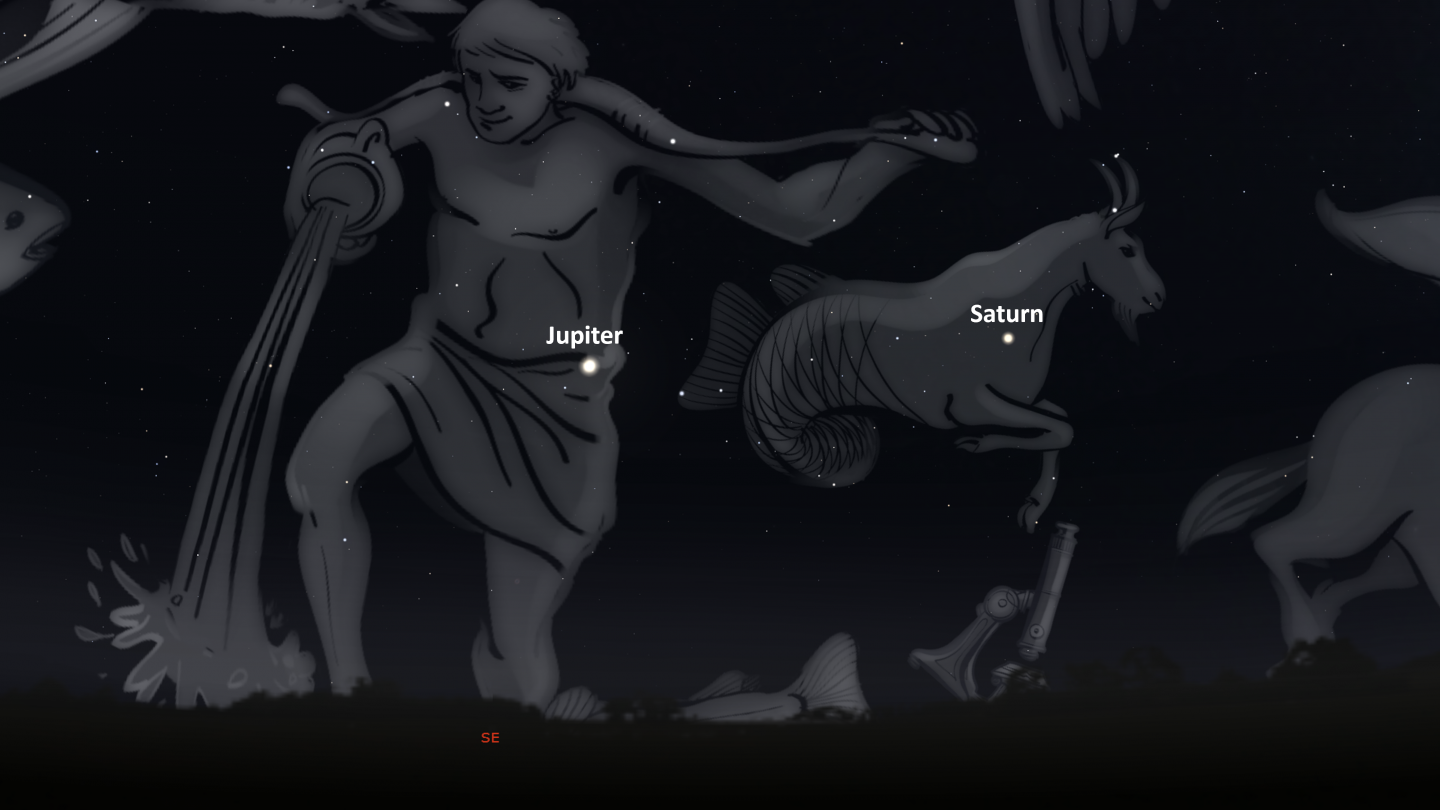
The gas giants of our solar system, Jupiter and Saturn will both reach full opposition this month. The planets’ great masses not only help regulate the Earth’s orbit (and hence, our climate), but also protect us from asteroids and other bodies. When a planet is in opposition, it means the Earth is directly between it and the Sun, making it appear bigger and brighter to us. While the planets will be visible to the naked eye, this is a great time to grab a telescope or even just a pair of binoculars to view them.
Saturn reaches opposition at around 7am BST on the 2nd of August, but as it won’t actually be visible in the UK skies then, don’t bother setting your clocks. Saturn will be bright and beautiful all of that week, and indeed for the rest of the month, so head outside any evening that week and take a look in the south-east around 10pm. Jupiter will be hot on its heels, reaching opposition at midnight BST on the 19th/20th August, but as with Saturn earlier in the month, on any of the nights around that date Jupiter will be shining brightly in the south-eastern evening sky.
11 to 13 August: The peak of the Perseids meteor shower
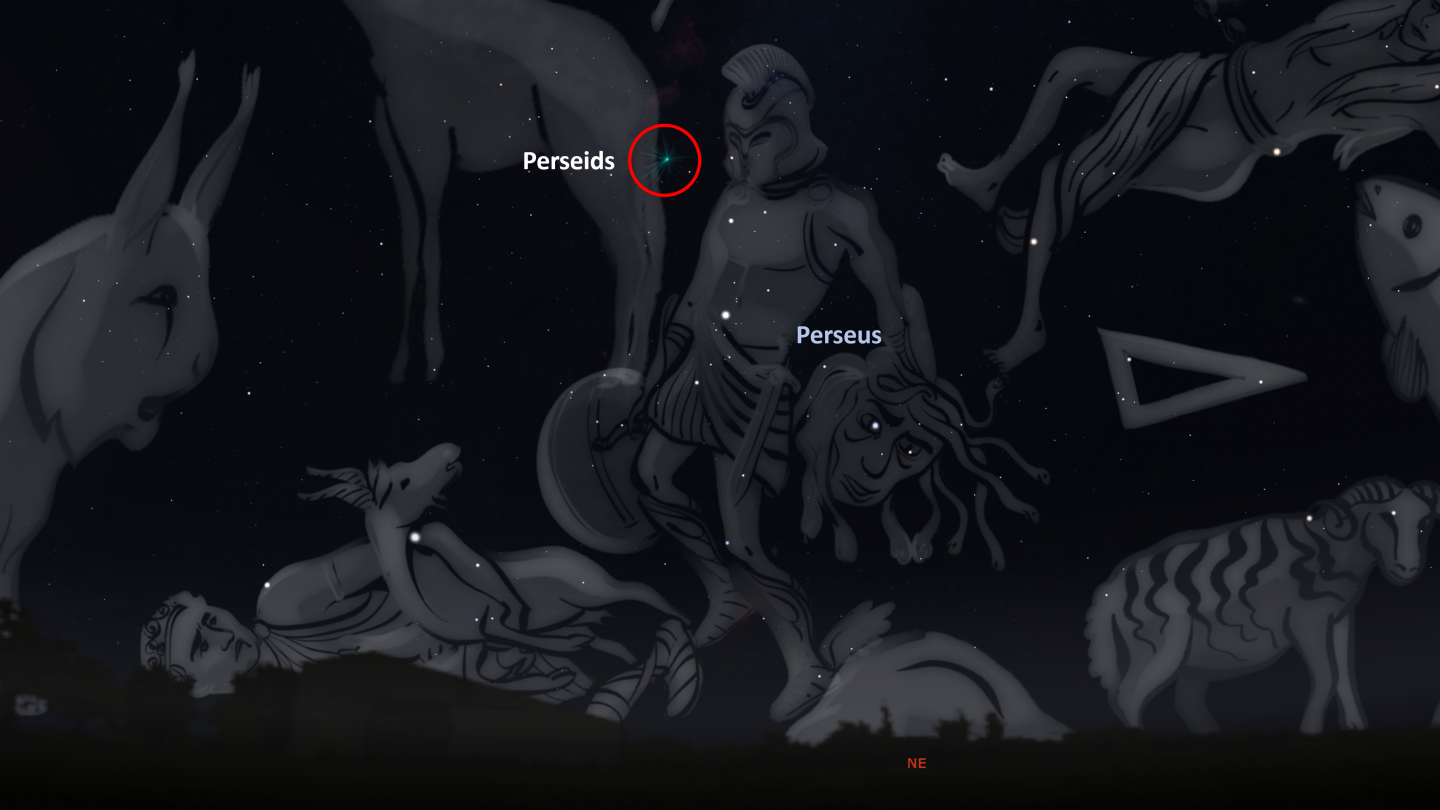
One of the most exciting events of the year is the annual Perseids meteor shower, peaking from the 11th to the 13th at up to sixty meteors per hour. With the waxing crescent moon setting nice and early, this should be an excellent show. The radiant for this cosmic show lies in the Perseus constellation, which for those of us in the UK is almost circumpolar, meaning it never fully sets, giving us all night to look up, though best views do come in the wee hours of the night.
Meteor showers typically occur when debris from larger asteroids or comets enter the Earth’s atmosphere and begin to heat up due to the friction created against air particles. The origin of the Perseids was discovered in 1862 by two astronomers independently of each other, and so was named after them both as the Swift-Tuttle Comet. A relatively large comet at around 26 km across, it’s thought to be around twice the size of the asteroid that may have killed the dinosaurs! Luckily for us, Swift-Tuttle is not on a collision course with Earth, instead orbiting the Sun once every 133 years, and was last visible from Earth in 1992.
22 August: A blue moon
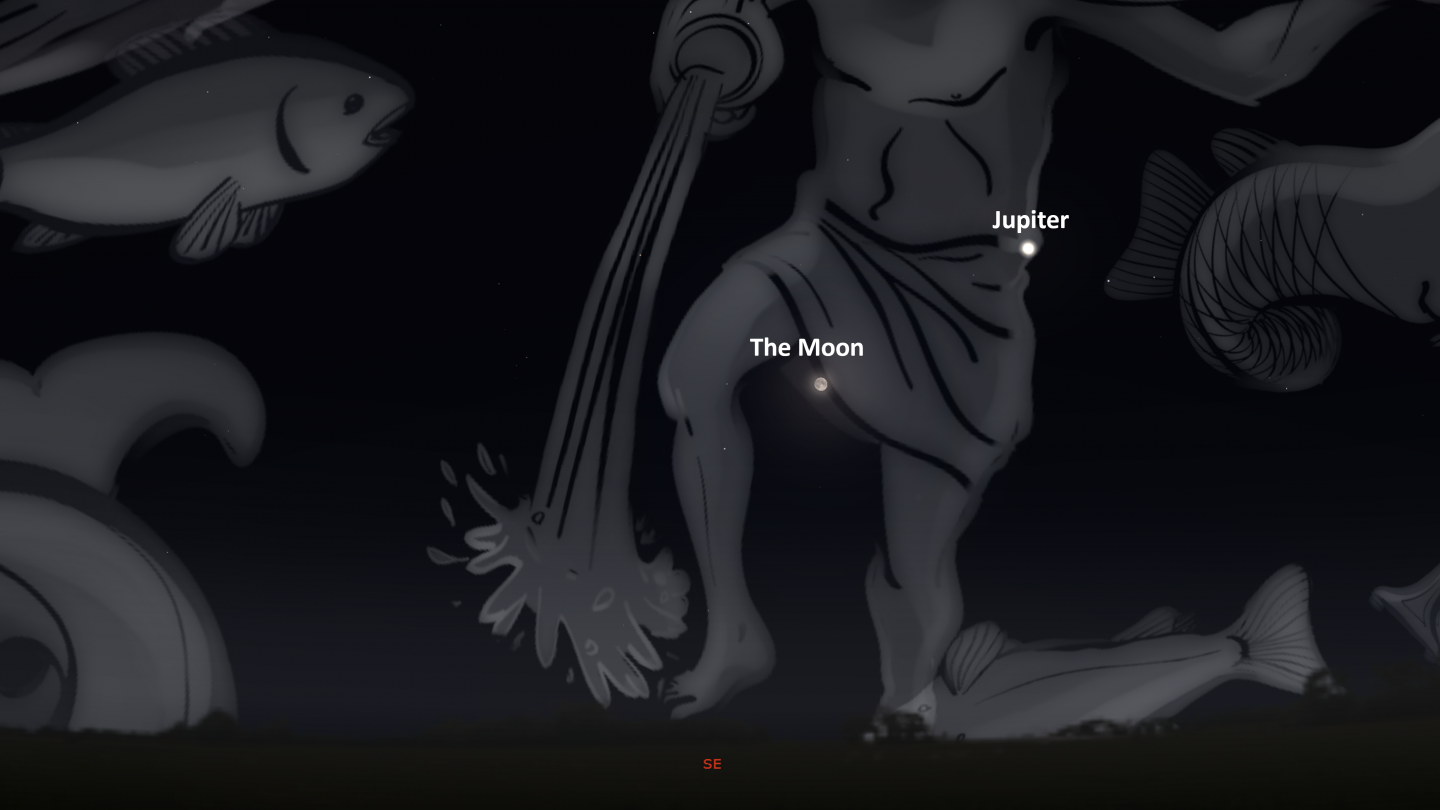
If you only go stargazing once in a blue moon, this is the time to do it! The 22nd of August will treat us to not only a full moon, but a blue one at that. The last blue moon we had coincidentally fell on Halloween of last year and was called ‘blue’ because it was the second full moon of October 2020. This August full moon is called a blue moon for a different reason – because it is the third full moon of a season that will have four full moons in total. This usually happens once every two or three years, which is where the phrase ‘once in a blue moon’ comes from.
It’s worth noting that just like the April Pink Moon, August’s blue moon will only be blue in name. For the Moon to actually appear blue, the Earth’s atmosphere would have to have lots of particles wider than 900 nm (nanometres) in it, as at that size particles are great at scattering red light away, allowing the human eye to capture the blue light being reflected off the moon. The particles are usually only present after a wildfire or volcanic eruption so perhaps it’s best that literal blue moons are so rare!
Southern Hemisphere: Throughout the month - Antares
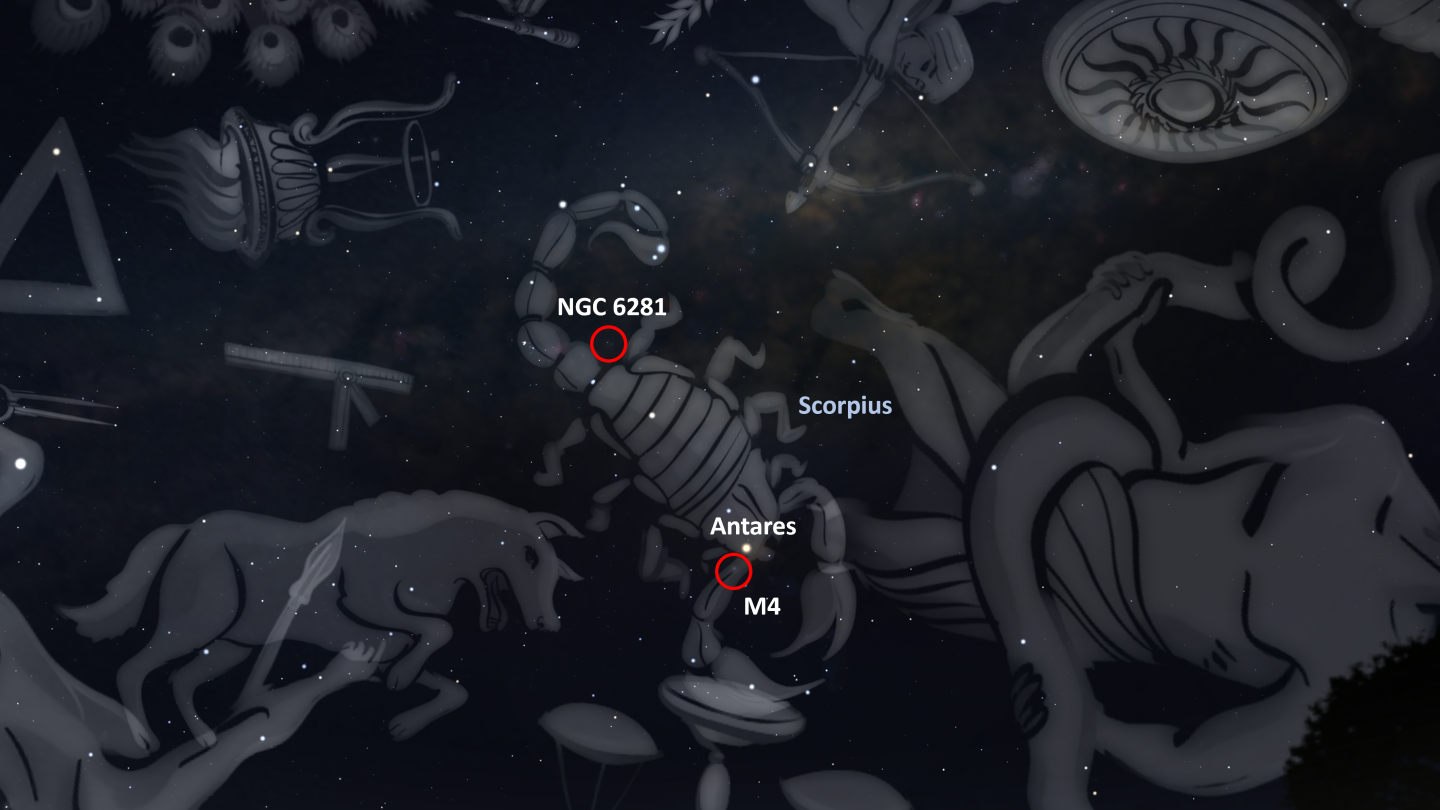
With long nights still the norm for most of the Southern Hemisphere, there’s plenty of chances to look out into the night sky. See if you can find the constellation of Scorpius, with the bright red star of Antares at its heart. To some Māori iwi, or nations, of New Zealand, Antares is Rēhua, a very powerful god who lives in the highest of the heavens. Antares is actually a binary star system, made up of a dying red supergiant star (Antares A) and a younger blue-white main sequence companion (Antares B).
If you have a relatively good telescope, see if you can resolve them – because of the contrast between the two stars, Antares B can appear almost green in colour! There are a number of star clusters in the constellation of Scorpius, including the globular cluster M4 right next to Antares, and the open cluster NGC 6281, higher up near the tail of the scorpion.
Learn more about the night sky
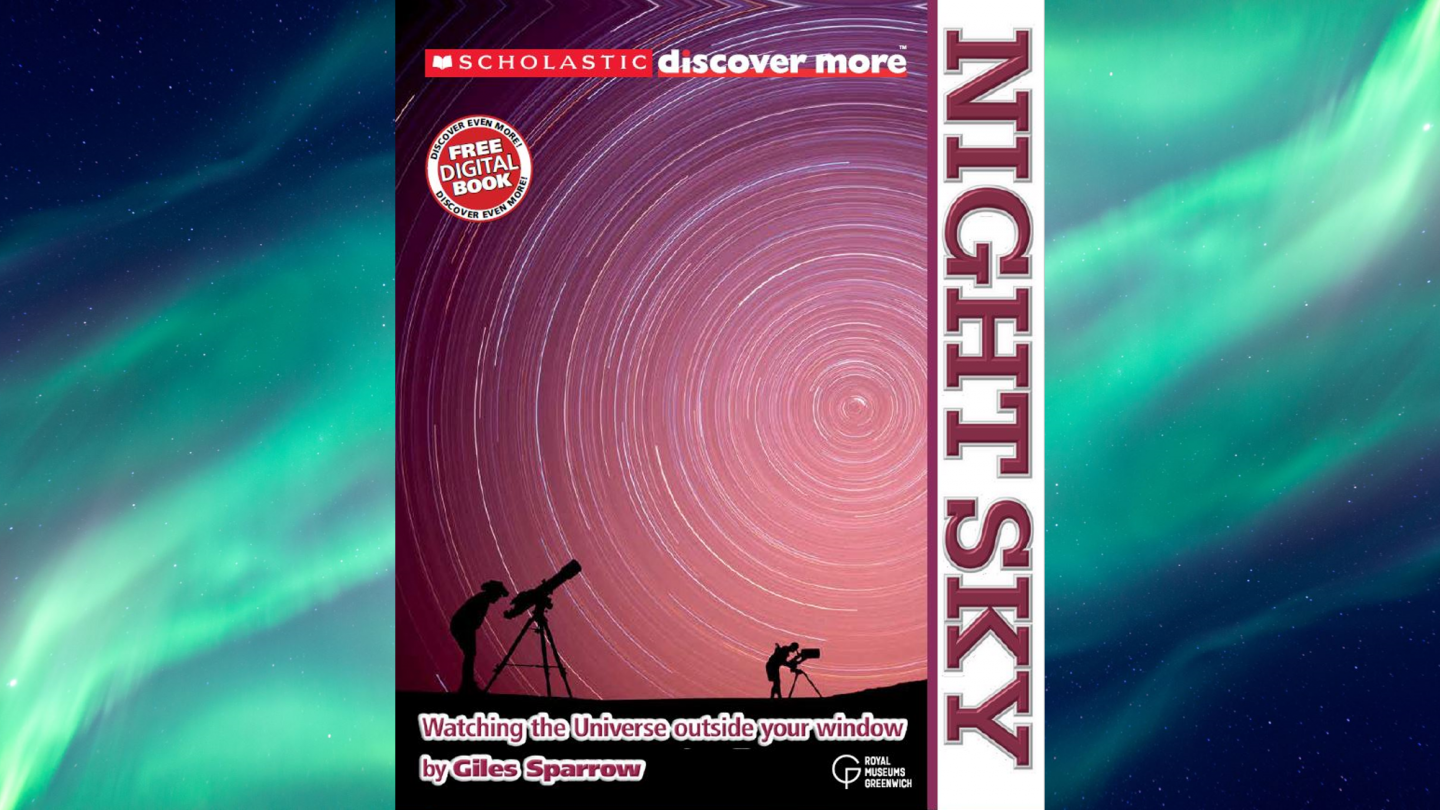
Special offer for secondary schools
Exclusive Royal Museums Greenwich publication Night Sky, for KS 4/5, is a spectacular guide to the night sky and an introduction to stargazing for young astronomers.
Discover all the major constellations and their highlights and history. Explore other worlds above your head, from our neighbours the planets to galaxies far from our own. Find out how what you can see from your window reveals the secrets of our incredible Universe.
The Royal Observatory Greenwich are offering copies to secondary schools at a discounted rate of £3 per copy. If this is of interest, please contact publishing@rmg.co.uk for more information.
The Moon's phases this month
- 8 August: new moon (2:50pm)
- 15 August: first quarter moon (4:20pm)
- 22 August: full moon (1:02pm)
- 30 August: last quarter moon (8:13am)
'Seven-Colour Feather of the Moon © Yiming Li' was one of the highly commended images from the 2019 Insight Investment Astronomy Photographer of the Year competition. See the shortlisted images from 2021's Astronomy Photographer of the Year competition
Stargazing Tips
- When looking at faint objects such as stars, nebulae, the Milky Way and other galaxies it is important to allow your eyes to adapt to the dark – so that you can achieve better night vision.
- Allow 15 minutes for your eyes to become sensitive in the dark and remember not to look at your mobile phone or any other bright device when stargazing.
- If you're using a star app on your phone, switch on the red night vision mode.
Need a stargazing telescope or binoculars? Check out our range of high quality observing equipment recommended by Royal Observatory Greenwich astronomers.
See our range of observing equipment
Share your pictures
This month's banner image is 'Deadvlei' taken by Stefan Liebermann and it is one of the shortlisted images from the Insight Investment Astronomy Photographer of the Year competition 2019.
Do you have any images of the night sky? If so, why not share your photos via our Royal Observatory Astrophotography Facebook group.
You can also connect with us on Twitter: @ROGAstronomers
Subscribe to our YouTube channel and join us on a journey through time and space as we explore our Universe
Planetarium Shows
Join us for live planetarium shows presented by astronomers from the Royal Observatory Greenwich
Observatory Online
In our Observatory Online video series, our astronomers explore different topics in Astronomy and Space Exploration. You can find these videos, and more, on our YouTube channel
Resources for teachers and students
The Royal Observatory Greenwich's learning team has also created:
- Free animated videos that answer the biggest questions in astronomy and free resources to go alongside them.
- A whole host of podcasts featuring interviews with real space scientists, astronauts and active researchers working in UK universities.
- A 'learning at home' hub which contains a suite of resources for you to use at home.
